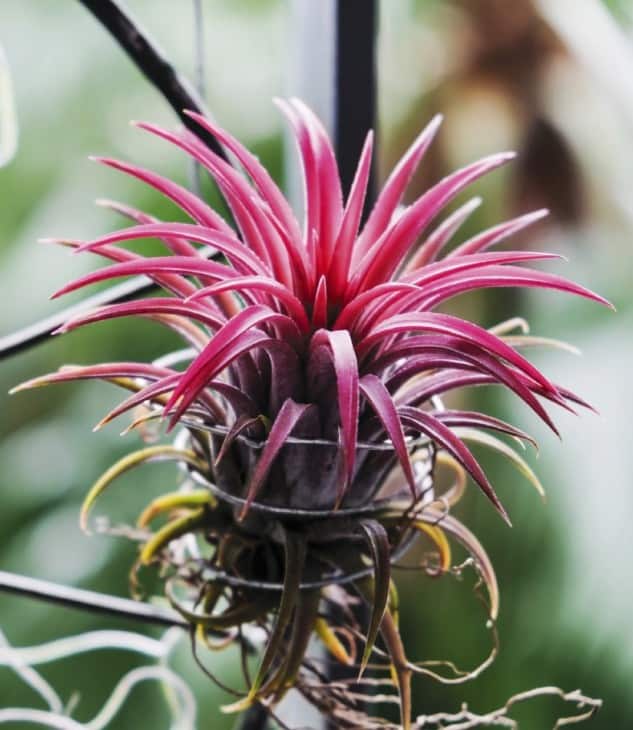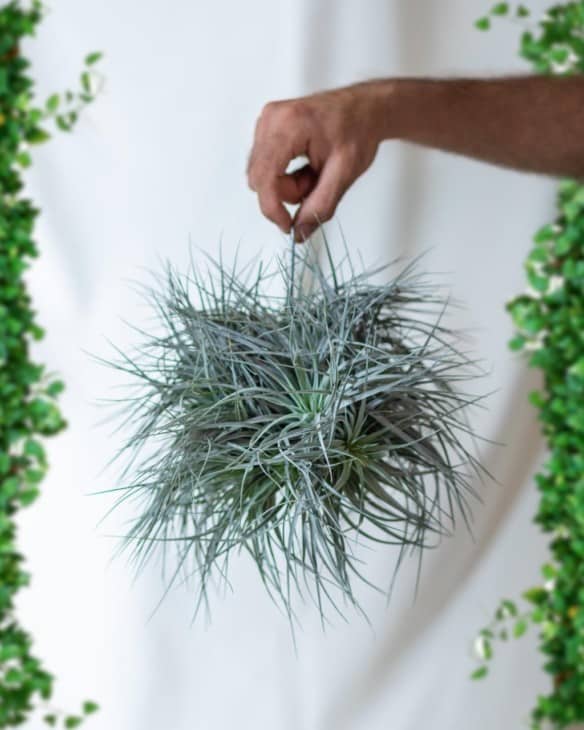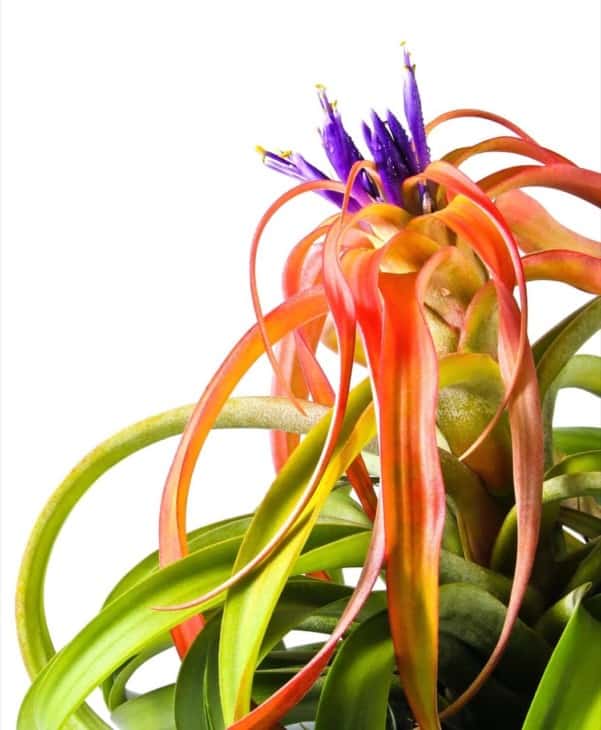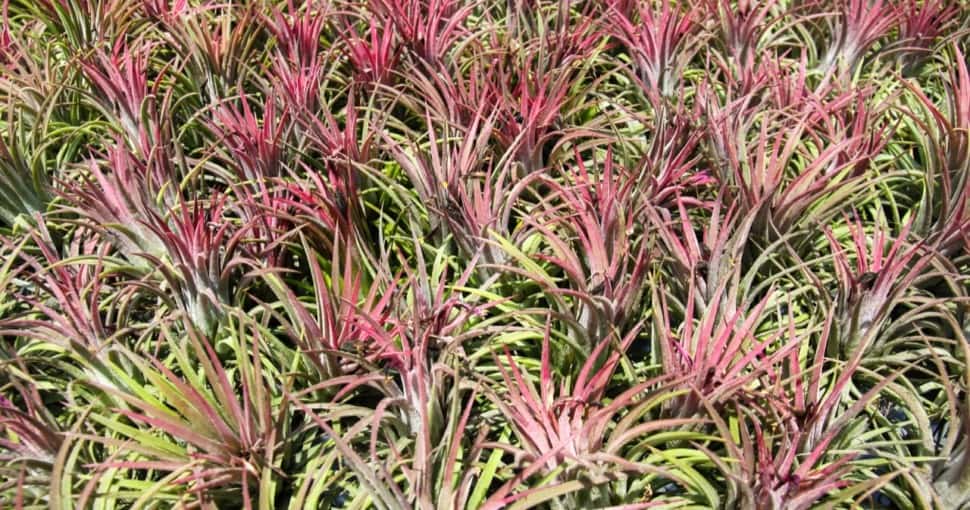Tillandsia sounds like a fairy kingdom. Instead, they are the latest craze sweeping the globe. Nicknamed “air plant,” there are at least 500 known varieties with even more hybrids. Thus, they’re like keeping a living stamp collection out on display. But are there any benefits to them besides bragging rights?
Contents
- 1. Air Plants Clean Your Air
- 2. Air Plants Benefit Sleep
- 3. Air Plants Help Reduce Stress And Anxiety
- 4. Air Plants Can Benefit Those With Dementia
- 5. Air Plants Can Benefit Recovery
- 6. Air Plants Help Increase Your Productivity
- 7. Air Plants Are Pet Safe
- 8. Air Plants Are A Low Allergy And Asthma Risk
- 9. Air Plants Are A Low Maintenance
- 10. Air Plants Are Inexpensive
- 11. Air Plants Come In Large Variety
Air plants have many benefits, including removing chemicals from the air, such as formaldehyde. They also can help reduce stress and improve productivity, both in your living and workspaces. Tillandsia are easy to maintain and can help create a nicer atmosphere.
Tillandsia, are related to the pineapple family, Bromeliaceae. They hail from tropical areas of the Americas, such as the West Indies and Mexico. Thus, they can naturally grow in places such as Florida. One of the most famous Tillandsia is Spanish Moss. But they make lovely addition indoors, too.
1. Air Plants Clean Your Air
Air plants can help make the air in your home and workspaces cleaner by removing chemicals such as formaldehyde. This airborne contaminate is commonly found in urban environments and places people smoke tobacco. Repeated exposure is considered a cancer risk.
Air plants, such as the famous Spanish Moss, are commonly used by science to act as a biomonitor for their local area. As the plants remove and retain the metals in the air, they demonstrate which areas have higher pollutions. Thus, these plants will do the same work for you indoors, cleaning the air you breathe.

2. Air Plants Benefit Sleep
Air plants get busy when the lights go out, making oxygen. This is unusual since most plants photosynthesize at night. But because air plants are not in the soil, everything they do to get their needs must be done at the optimal time. Thus, living in forest canopies, they developed the clever trick of Crassulacean acid metabolism (CAM).
CAM allows air plants to take advantage of when CO2 is high (daytime) and release all that oxygen we love at night. Which makes air plants one of the best kinds of plants you can have in your bedroom, helping you sleep with plenty of excellent oxygen.
However, to take full advantage of this clever air plant trick, give them their spritz of water or soak in the mornings.
3. Air Plants Help Reduce Stress And Anxiety
Yes, it can be fun to show off your air plants on social media. But there is much more to their mental health benefits than collecting likes. Gardening has been shown to lower people’s stress and anxiety. Part of this is due to the satisfaction of having created an enjoyable living environment.
But these benefits are not limited to outdoor gardens. Having plants indoors brings similar satisfaction to the indoor spaces we inhabit while also giving us something to nurture. However, our high-stress lives leave little extra time for healthy hobbies, such as gardening.
But air plants are low maintenance. You spray them about once a week, give them a soak once a month. Thus, allowing people to engage with a living organism without the demands of adopting a basketful of puppies.
This phenomenon is becoming so well known that there are now doctors prescribing indoor plants to those struggling with mental health. It is also a wonderful aid for people who are feeling lonely.

4. Air Plants Can Benefit Those With Dementia
Dementia can be a distressing condition. Also, many care facilities and medical establishments can feel clinical and far from that soothing home-like environment. Thus, horticultural therapy and the presence of indoor plants help with distress and creates a much friendlier environment.
5. Air Plants Can Benefit Recovery
Researchers have looked into the benefits of flowers, plants, and gardens both in regular hospital care and after recovery of a surgical procedure. It has been revealed that the presence of these natural decorations helps with recovery.

6. Air Plants Help Increase Your Productivity
The spaces we inhabit and how they are designed have an impact on our productivity. A study at the University of Exeter found that plants in our workplaces raise happiness, overall creating a more productive workforce.
However, it isn’t just about the aesthetic boost plants bring to spaces. A recent study in Seoul looked at children’s productivity in the classroom. The benefits of having live plants were not the same if faux-plants were used.
The students were not just more productive but were in a better overall mood, from feeling relaxed, more comfortable in their surroundings, having less stress, and greater positive emotions.
7. Air Plants Are Pet Safe
Houseplants are lovely, but they are not always the best mates for your fur-best friends. Air plants, however, are not listed as toxic for either dogs or cats. Which doesn’t mean that air plants should be fed to a pet. But it does make them an excellent low-risk option to have in your home.
8. Air Plants Are A Low Allergy And Asthma Risk
Houseplants clean the air, making it easier to breathe. However, flowers bring pollen, and soil can be trouble for people sensitive to mold, such as asthmatics. However, air plants rarely flower, perhaps once in their lifetime. Also, they don’t live in soil, thus will not contribute to mold allergies.
Thus, air plants provide the air cleaning properties that those with allergies and asthma need, without the other risks that come with houseplants. It’s a win-win.
9. Air Plants Are A Low Maintenance
As we’ve mentioned above, these plants take require little of your time or attention. General care guides are to spritz them with water once a week, soak them about once a month. They will also need some access to sunlight.
10. Air Plants Are Inexpensive
Air plants are generally very inexpensive. There are exceptions, should you catch the collecting bug and want to own rare varieties or special hybrids. But overall, these are cheap house plants that only require something to cling to, be it a piece of bark or a tiny basket. Some are happy to sit in an empty wine glass.
11. Air Plants Come In Large Variety
As mentioned earlier, there are over 500 varieties, not to mention their hybrids. However, there is more to their differences than if you obtain a fuzzy one or not. While many look similar when they are young, in their grayish-green state, when they grow, their shape and colors become much more unique.
A little research into air plants will let you know which varieties will produce reds, yellows, oranges, purple, and magenta shades. Their different shapes and textures will also become much more distinct as they age, giving your own space a distinctive look.







